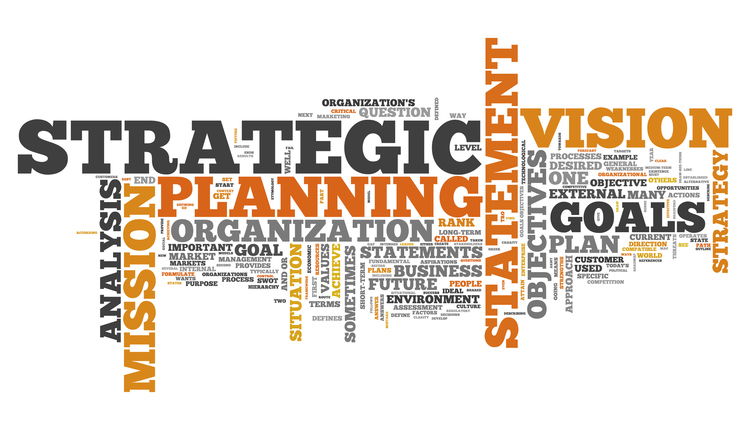We are certainly all aware that the way we do business today has radically changed from even just a few years ago - and continues to change. Before we can predict events in the future, we have to look back at least three years - a quarter of a decade - and realize that certain things happen over time, they have to evolve and any predictions we make for 2011 may not happen until at least a quarter of a decade going forward.
I used to teach math before I went into business. So when I think of the future, equations come naturally. For 2011 - and events that will most likely evolve over the next three years - the equation that comes to mind is: E2C=R.
E stands for the environment. It affects our daily business life in a variety of ways. For example, the events of 9/11, while they seem a long time ago, still affect the way we do many things. Many businesses didn't survive that period. Those who did survive learned to adapt and move forward, quickly aligning business processes with the needs of customers who were also affected. Hurricane Katrina raised awareness as well. After witnessing the devastation that a hurricane brings to businesses in its wake, companies across the nation began to review or implement disaster recovery programs.
In just the last three years, we have seen major changes in behavioral habits due to evolving technology, the economy, and shrinking volumes, particularly in the print and mail arena. The recession was just a rumble three years ago, not the roar it is today. Its effect, and the way people operate because of it, has made the words "new normal" an accepted part of our business lexicon, shaping our plans going forward.
And then there is technology. A decade ago we were just beginning to understand how the Internet and email could add to our business processes. Three years ago, the iPhone was just a gleam in Apple's eye, as was the iPad. The heightened interest and involvement with social media platforms was barely in existence. How quickly all that has changed. Now, the Internet and email - along with smartphones, tablets and a myriad of other techniques that keep us connected - are a part of our daily lives and set a completely new standard. This year alone, I received at least 30 electronic holiday cards. Our company sent one as well - even though we still hand-addressed, signed and stamped 400 printed cards as we have every year.
C stands for what this environment has created: low prices, over capacity, instant response and the need to transform our business models to meet these changes. If we look back a quarter of a decade, we have seen active consolidation of businesses to make up for the increasing lack of volume and over capacity. One example of this is our hardware suppliers buying software and service companies to stay competitive and profitable. HP bought Exstream Software in 2007 and EDS in mid-2008. Xerox bought ACS. Canon and Oce merged. Last year, Pitney Bowes started selling HP printers and continues to get more into the business services sector. Bowe, Bell & Howell bought BCC Software to help diversify. And the list goes on, with much more to happen in the future.
Technology has completely changed our relationship with time, which, in turn, changes (and will continue to change) our business processes. No longer does a salesperson drive across country making calls, nor do we even typically wait for FedEx. Information is exchanged at warp speed. "Nine-to-five" is not a place anymore. People can work anywhere, at anytime, which brings a whole new level of challenges.
So R is the result of all this. What it tells us is that we cannot preserve the business models of yesterday or even today. Our business models are going to have to transform with the times to stay viable. In 2011 (and perhaps three years forward), due to E and C, I predict we will continue to see more consolidation of businesses to make up for the lack of volume and over capacity. The industry of print and mail outsourcing is a mature industry, so to compete will require more consolidation. This will present some challenges for many businesses because the lines that separate suppliers from their customers will be blurred. Many of our vendors, as they add new services due to acquisitions, will find themselves in some instances competing with their customers. As more companies compete for the same business, pricing will certainly remain an issue for all of us.
Rising postal costs in this tough economy - and postal requirements that keep changing and growing in complexity - are certainly two solid reasons the world of direct mail and transactional mail is sure to change. Speed and cost are two reasons more and more people will become fans of electronic documents, causing many of us to expand the range of services we provide to compete.
And any mention of the USPS causes me to safely predict that this is one organization that will have to make sweeping changes to keep up with the times. While not much will officially pass in 2011, we are sure to see the USPS transform - not preserve - its business model. Congress will most likely make those changes in 2012 to get relief from the labor charges as mail volumes continue to decline. Six-day delivery is bound to give way to a five-day plan, and it is certain some post offices and postal facilities will close.
The state of the economy will continue to influence behavior, and all of us in business have to take that into consideration. People will still be slow to make buying decisions in 2011 until some of the political turmoil settles, houses start to sell again, and financing options become easier to obtain. In less than three years a new election will take place, affecting our lives in ways we have yet to know.
However, as we move into 2011 and the near future, there is one thing we can predict for certain: We live in the age of speed. Being easy to do business with and making it possible for our customer to save time and simplify lifestyles will become more and more a part of why someone will choose to remain a loyal customer, no matter what business you are in. That will require all of us to keep up with the trends that drive the changes in our business world and, as a result, transform our business models as often as is necessary, because things are not going to slow down.
Harry Stephens is President/CEO, and founder of DATAMATX, one of the nation's largest privately held, full-service providers of printed and electronic billing solutions. As an advocate for business mailers across the country, Stephens is actively involved in several postal trade associations. He serves on the Executive Board of the Greater Atlanta Postal Customer Council, Major Mailers Association (MMA), PCC Advisory Committee (PCCAC), and the Board of the National Postal Policy Council (NPPC). He is also president of The Imaging Network Group (INg), an association for Transactional and Direct Mail Marketing service bureaus. As an expert on high-volume print and mail, he has frequently been asked to speak to various USPS groups, including the Board of Governors, about postal reform and other issues affecting business mailers. Harry is a frequent contributor to E-Document News and is author of Harry's Corner. You can contact Harry at hstephens@datamatx.com. Find DATAMATX at http://datamatx.com.
# # #
I used to teach math before I went into business. So when I think of the future, equations come naturally. For 2011 - and events that will most likely evolve over the next three years - the equation that comes to mind is: E2C=R.
E stands for the environment. It affects our daily business life in a variety of ways. For example, the events of 9/11, while they seem a long time ago, still affect the way we do many things. Many businesses didn't survive that period. Those who did survive learned to adapt and move forward, quickly aligning business processes with the needs of customers who were also affected. Hurricane Katrina raised awareness as well. After witnessing the devastation that a hurricane brings to businesses in its wake, companies across the nation began to review or implement disaster recovery programs.
In just the last three years, we have seen major changes in behavioral habits due to evolving technology, the economy, and shrinking volumes, particularly in the print and mail arena. The recession was just a rumble three years ago, not the roar it is today. Its effect, and the way people operate because of it, has made the words "new normal" an accepted part of our business lexicon, shaping our plans going forward.
And then there is technology. A decade ago we were just beginning to understand how the Internet and email could add to our business processes. Three years ago, the iPhone was just a gleam in Apple's eye, as was the iPad. The heightened interest and involvement with social media platforms was barely in existence. How quickly all that has changed. Now, the Internet and email - along with smartphones, tablets and a myriad of other techniques that keep us connected - are a part of our daily lives and set a completely new standard. This year alone, I received at least 30 electronic holiday cards. Our company sent one as well - even though we still hand-addressed, signed and stamped 400 printed cards as we have every year.
C stands for what this environment has created: low prices, over capacity, instant response and the need to transform our business models to meet these changes. If we look back a quarter of a decade, we have seen active consolidation of businesses to make up for the increasing lack of volume and over capacity. One example of this is our hardware suppliers buying software and service companies to stay competitive and profitable. HP bought Exstream Software in 2007 and EDS in mid-2008. Xerox bought ACS. Canon and Oce merged. Last year, Pitney Bowes started selling HP printers and continues to get more into the business services sector. Bowe, Bell & Howell bought BCC Software to help diversify. And the list goes on, with much more to happen in the future.
Technology has completely changed our relationship with time, which, in turn, changes (and will continue to change) our business processes. No longer does a salesperson drive across country making calls, nor do we even typically wait for FedEx. Information is exchanged at warp speed. "Nine-to-five" is not a place anymore. People can work anywhere, at anytime, which brings a whole new level of challenges.
So R is the result of all this. What it tells us is that we cannot preserve the business models of yesterday or even today. Our business models are going to have to transform with the times to stay viable. In 2011 (and perhaps three years forward), due to E and C, I predict we will continue to see more consolidation of businesses to make up for the lack of volume and over capacity. The industry of print and mail outsourcing is a mature industry, so to compete will require more consolidation. This will present some challenges for many businesses because the lines that separate suppliers from their customers will be blurred. Many of our vendors, as they add new services due to acquisitions, will find themselves in some instances competing with their customers. As more companies compete for the same business, pricing will certainly remain an issue for all of us.
Rising postal costs in this tough economy - and postal requirements that keep changing and growing in complexity - are certainly two solid reasons the world of direct mail and transactional mail is sure to change. Speed and cost are two reasons more and more people will become fans of electronic documents, causing many of us to expand the range of services we provide to compete.
And any mention of the USPS causes me to safely predict that this is one organization that will have to make sweeping changes to keep up with the times. While not much will officially pass in 2011, we are sure to see the USPS transform - not preserve - its business model. Congress will most likely make those changes in 2012 to get relief from the labor charges as mail volumes continue to decline. Six-day delivery is bound to give way to a five-day plan, and it is certain some post offices and postal facilities will close.
The state of the economy will continue to influence behavior, and all of us in business have to take that into consideration. People will still be slow to make buying decisions in 2011 until some of the political turmoil settles, houses start to sell again, and financing options become easier to obtain. In less than three years a new election will take place, affecting our lives in ways we have yet to know.
However, as we move into 2011 and the near future, there is one thing we can predict for certain: We live in the age of speed. Being easy to do business with and making it possible for our customer to save time and simplify lifestyles will become more and more a part of why someone will choose to remain a loyal customer, no matter what business you are in. That will require all of us to keep up with the trends that drive the changes in our business world and, as a result, transform our business models as often as is necessary, because things are not going to slow down.
Harry Stephens is President/CEO, and founder of DATAMATX, one of the nation's largest privately held, full-service providers of printed and electronic billing solutions. As an advocate for business mailers across the country, Stephens is actively involved in several postal trade associations. He serves on the Executive Board of the Greater Atlanta Postal Customer Council, Major Mailers Association (MMA), PCC Advisory Committee (PCCAC), and the Board of the National Postal Policy Council (NPPC). He is also president of The Imaging Network Group (INg), an association for Transactional and Direct Mail Marketing service bureaus. As an expert on high-volume print and mail, he has frequently been asked to speak to various USPS groups, including the Board of Governors, about postal reform and other issues affecting business mailers. Harry is a frequent contributor to E-Document News and is author of Harry's Corner. You can contact Harry at hstephens@datamatx.com. Find DATAMATX at http://datamatx.com.
# # #








